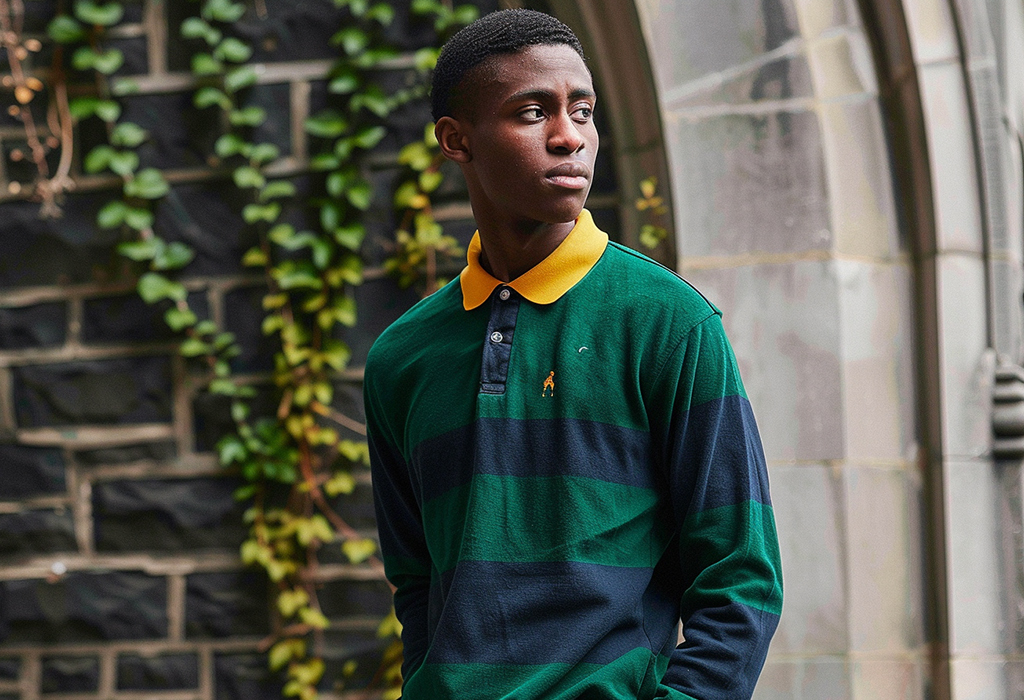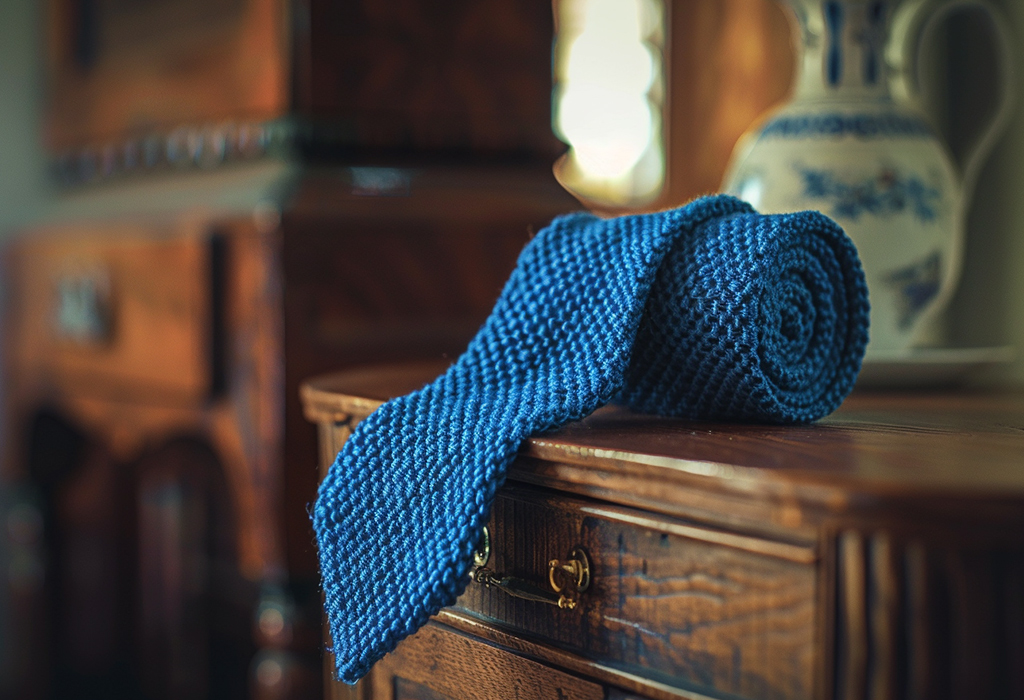

Chances are, if you’re even slightly interested in style and fashion, you’ve probably heard the term “ivy style” slung around a whole bunch.
Maybe it was on an insightful thread on X (formerly Twitter) breaking down menswear aesthetics. Or perhaps your favorite style influencer mentioned the term while reviewing the latest Drake’s lookbook.
Wherever you first heard it, you should be able to form a basic idea of what exactly it’s referring to, even without doing any extensive research.
Ivy style, as the name suggests, is a slightly loose term used to describe the fashionable aesthetics favored by attendees of the elite schools and universities of America, particularly throughout the 20th century.


But, you may be wondering – does it still mean the same thing today? In the modern fashion landscape, what qualifies as ivy style? How does it differ from “dark academia,” if at all?
Real Men Real Style has you covered, not to worry. We’ll answer all that, and more, in this comprehensive guide breaking down the history and fundamentals of ivy style, its various pieces and how they work together, as well as how you can get the look for yourself just in time for autumn!
A Brief History of Ivy Style
Ever wondered why “ivy league” colleges have been dubbed as such? The answer is surprisingly simple. Stereotypically, the elite universities of the American northeast shared a similar picturesque aesthetic – that being ivy-covered buildings across their respective campuses.


Ivy league schools in the past were quite the sartorial stomping ground, too, however. Today, many may look and see ivy style as sort of a formal-adjacent fashion genre, or one that is at the very least “smart and sharp.”
Ironically though, when the style began to really kick off and emerge in the 1950s and 1960s, it was born from students’ desire to break away from traditional British tailoring by casualizing their collegiate uniforms.
It was a way of combining the old with the new at the time, and the resulting aesthetic, filled with blazers, oxford shirts, khaki chinos, penny loafers, and more, has stood the test of time to this very day, constantly being reiterated and chased after.
Part of its appeal is in its association with the upper, sophisticated class of America. For others, it just boils down to being an exercise in great, timeless, smart casual style. It’s been practiced by students, musicians, and even presidents.
And you can master the art of ivy style, too.
The Basic Wardrobe Staples of Ivy Style
The basics of ivy style might not seem all that remarkable at first, but upon closer inspection, you can find the ways in which these individual pieces stand out.
1. Khaki Chinos


Almost every guy already owns a pair of khakis. They’re basically required at this point. “Khaki” can be a bit hard to define, as it can occasionally appear in cool-tones taupes and warm-tones yellowish browns. Some even consider a shade of olive green to be “khaki,” believe it or not.
The reason they took off on college campuses in the mid 20th century can be loosely traced back to khakis origin in military contexts throughout the world wars. Students saw their practicality, as a good pair of khakis can take a beating, wash well, and give off a sharp but casual look.
For a truly vintage-inspired ivy look, khakis that sit a bit higher on the waist are best, with or without pleats. Some feel that flat-front pants are a bit more traditionally “ivy,” but pleats work just as well in this context.
In the 50s, these pants tended to fit fairly wide and loose, whereas in the 60s, slightly slimmer straight legs could be found around campus at times.
Of course, much like today, pant widths fluctuate pretty much by decade, but you can never go wrong with a classic straight or relaxed fit.
2. Oxford Shirts


Oxford cloth button downs are a slightly more casual take on the button down, largely due to their extra heft and subtle texture. They’re not as smooth-surfaced as a broadcloth dress shirt, and typically feature button-down collars, a look that originates from innovations made for polo player uniforms.
When ivy style was finding its footing, OCBDs were a natural choice, as they exude that perfect balance between sharp and casual – much like a good pair of chinos. They were practically made for each other.
3. Blazers and Sportcoats


In England, traditional school uniforms most often include some iteration of a blazer. These often featured some sort of signature stripe detailing, denoting which school or club the wearer belonged to.
This tradition trickled down to the states, but for the most part, it only reached the more elite institutions. Definitions do vary by region, but in one traditional sense, a blazer is almost always navy blue and will feature gold or silver-toned metal buttons, which in an ivy context, much like the British, would bear some sort of insignia to indicate one’s school, sports team, or club of choice.
Besides for a classic navy blazer, other types of sport coats were often worn by the ivy league students of the 20th century. These jackets were usually made from materials like tweed, flannel, corduroy, and cotton.
4. Loafers, Derbies, and Classic Sneakers


The penny loafer is arguably the most ubiquitous piece of ivy style footwear, though more casual lace-ups like derbies and classic sneakers made from materials like canvas or leather could be spotted just as much.
Believe it or not, the bold trend of wearing white socks with loafers partially originated during the birth of ivy style.
All in all, these shoe choices were indicative of a desire to give off a more laid-back vibe, with less formal oxfords about in favor of more casual options.
5. Knit Sweaters


The American northeast gets pretty damn chilly, so naturally students sported quality knitwear to keep warm. These knits were usually chunky woolen garments, in either earthy tones such as brown, tan, or green, as well as brighter primary colors like red or blue.
There’s a lot of reliance on texture here. The elegance of these types of sweaters often came down to how rugged they were on their own, scratchy-looking, thick wool slip-ons that offered quite a bit of insulation, but paired with smart pieces like sport coats, chinos, and penny loafers.
More Advanced Ivy Style Garments
Now, that was pretty simple stuff, no? Well, there’s a whole extra layer to fine ivy style, and it’s made up of various clothing articles you might not think of initially.
1. Sweater Vests


A sort of an in-between article of clothing, the sweater vest is exactly what it sounds like. A sweater sans arms, if you will. They’re either slipovers, or more of a button-up cardigan variety.
In any case, they were heavily popular in the 50s and 60s, and even made a bit of a return in the 90s (think Chandler Bing from Friends), and again, in the 2020s.
A bit daring for some, but undoubtedly ivy.
2. Ivy Outerwear


For warmth during the winter months, ivy style includes a range of outerwear options, such as the polo coat, a tan, belted overcoat that originates from its namesake sport, or other more casual takes on the overcoat, such as raglan-sleeve coats made from thick wools like tweed.
In colors like tan, black, gray, and brown, these types of coats were a decidedly grown-up look for younger men, at least in today’s context. But they looked very dramatic, and they kept you quite warm, obviously.
For an even more casual, somewhat more sport-adjacent look, duffle coats were popular as well. Another signature of the northeast region of the United States, duffle coats are made unique by their buttoning system, and would typically come down a bit shorter than the overcoats mentioned above.
3. Seersucker


A fabric born of the American south, seersucker gained a preppy reputation when it began showing up on elite college campuses across the country during the warmer months.
These lightweight cotton garments, usually in the form of a jacket, pants, or full suit, even, were seen as fairly casual wear and would often be paired with white buck shoes and the like, as well as straw hats for even more prep – another trend that possibly owes its origins to British school traditions.
4. Rugby Polos


The rugby shirt, or rugby polo, as it is sometimes referred to, is another great piece of casual ivy style. Often sporting color-blocked stripes and a heftier weight to its cotton composition, these paired wonderfully with chinos and loafers, and still look great to this day!
5. Colored Chinos


Prep, the slightly louder cousin of ivy style, is often defined by its loud primary colors, especially showing up in the form of brightly-colored chinos.
Yellow, red, green, blue – you could spot these from a mile away, and while it’s decidedly less subtle than most of ivy style, it’s a later addition to the aesthetic’s legacy that can be incredibly compelling, if you dare to pull it off, that is.
6. Accessories


Other smaller items to consider when looking at the history of ivy style and what’s endured would include knit ties, leather-strapped watches with humbly-sized faces, and even a straw hat, like mentioned previously. White socks with loafers, braided leather belts, and signet rings could all be attributed to this style as well, in some way or another.
Where to Shop for Ivy Style Today
Looking to plunge deep into the world of ivy style for yourself? We don’t blame you, it really is one of the best and sharpest fashion aesthetics a guy can go for. With these reputable brands, you’ll quickly find the right wardrobe pieces to set you down the right path.
1. J.Crew


J.Crew is perhaps the best known example of contemporary, casual smart style today, and in recent years, they’ve gone back to their roots quite a bit and have doubled-down on their heritage style, much of which involves a great deal of ivy aesthetics.
2. L.L. Bean


Born in the American northeast, L.L. Bean offers a great mix of smart sportswear and classic pieces that were and continue to be associated with great ivy style. From their fisherman sweaters to their iconic Bean Boots, there’s a lot to draw from.
3. Brooks Brothers


Founded in 1818, Brooks Brothers is the oldest American apparel brand still operating today, and their influence on menswear have certainly been felt in the ivy style space, outfitting many a young college student attending Harvard, Princeton, Yale, or another elite school in the 20th century.
4. Ralph Lauren


With a wide grasp on nearly every area of classic American style, Ralph Lauren has undoubtedly been influenced, and continues to actively influence, ivy style and its evolution. Many Ralph Lauren labels are rife with prep and sophisticated class – you only need to visit one store or glance at a single lookbook to get the idea.
5. Drake’s


Perhaps the king of high-end smart casual wear, there’s a reason we mentioned them in the opening paragraph of this guide.
Drake’s is a british brand that draws heavily from ivy style and its English origins, not to mention the fact that their whole style philosophy seems to be based on perfectly blending the casual with the classy.
Think of sport coats with jeans, soft oxford shirts, knit rep ties, loafers, and you’ll get the picture. A pricey brand to be sure, but also worth checking out just for inspiration alone!